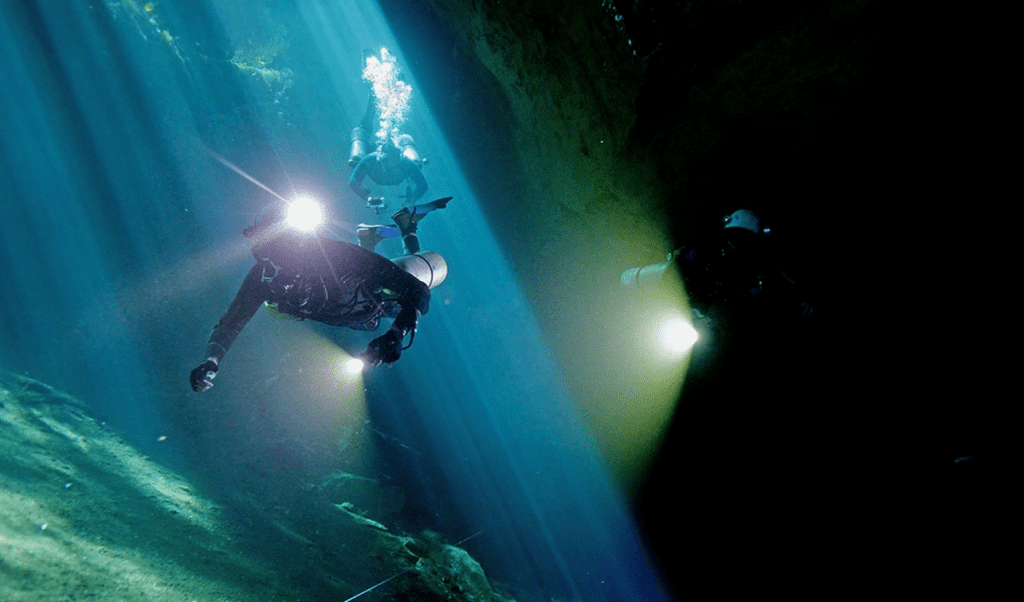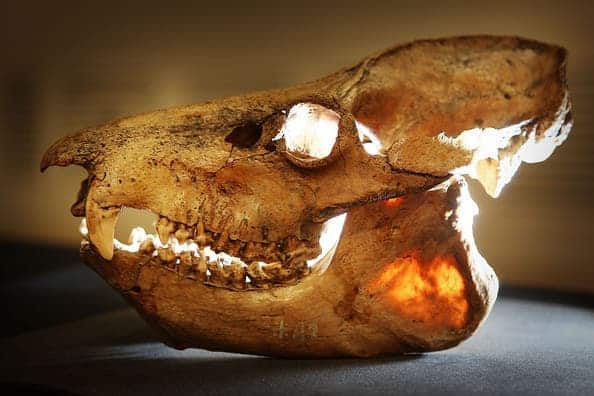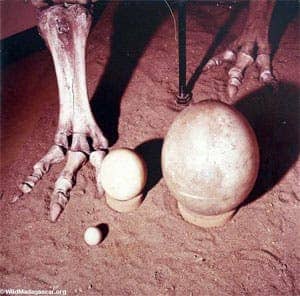Paleontologists diving beneath the surface of a water-filled cave in Madagascar made a monumental find: a graveyard filled with the bones of a wide variety of species,some very rare, other extinct for hundreds, if not thousands of years. Some of the remains that dot the bottom of the Aven Cave in Tsimanampetsotse National Park include those of the extinct elephant bird, a flightless giant similar to an ostrich, but most bones belong to the long-lost giant lemurs.
Madagascar’s long-lost giants

“It’s just phenomenal,” researcher Laurie Godfrey, a paleontologist at the University of Massachusetts at Amherst, said in a phone interview with The Washington Post. “A huge cache of fossils like this has never been explored before. Now that we know that it’s there, it’s opening up a new era in paleontological exploration.”
These extinct lemurs could grow to be as big as a gorilla! There were many such species of giant lemurs, called sloth lemurs, koala lemurs, and monkey lemurs by scientists depending on the lifestyle and modern-day animal they most closely resembled. Judging from subfossil material (when bones are too young to have completely fossilized and still contain some organic matter), experts conclude the the giant lemurs were almost all diurnal and had large areas of occurrence relative to lemurs today. Palaeopropithecus ingens ate leaves and fruit, and was adapted for slowly climbing trees and extended periods of suspension, earning it the name sloth lemur. The monkey lemur, Hadropithecus stenognathus, was omnivorous, terrestrial, and lived in open grasslands.
These diverse giant lemurs were all alive when humans arrived in Madagascar 2,300 years ago. The monkey lemur persisted until as recently as 500 years ago and may even live on in oral histories of people from southeastern Madagascar. So, what happened to the giant lemurs? We know from the spores of fungus that only grows in the dung of very large animals that Madagascar’s megafaunal population crashed a suspicious 500 years after human arrival and continued to decline over the next few centuries. Knife-cut giant-lemur bones, found in great number, are particularly suggestive towards a human-sprung demise. Today, there are only 100 species of lemurs still alive in the world – all are endemic to Madagascar.

Surprisingly, the giant lemur remains recently discovered in the Aven Cave seem to suggest most of them died of natural causes, with hardly any sign of post-death damage like the kind you’d see when something is trying to eat you (knife mark, bite mark etc.).
“The preservation is really incredible,” says Brooklyn College anthropologist Alfred Rosenberger, a National Geographic grantee who is leading the project.
A treasure trove

The eggs of the extinct giant Elephant bird were the largest single-cells that ever existed on Earth — as big as any dinosaur egg. Scientists believe the last of the Elephant birds went extinct fairly recently — around 1700.
Rosenberger and colleagues believe the remains they found come from periods both before and after humans first came on the island of Madagascar. Moreover, while the giant sloth were the prize attraction, they were far from being alone. The list includes birds, turtles, crocodiles, rodents, carnivores, and more. So, the real question is: how did all these animals washed up there?
A while back, a team from the Dominic Republic explored two other caves in Madagascar that preserve different animals from the same time as those in Aven Cave. One of this animals is the now extinct Cryptoprocta spelea, a carnivore known as the giant fossa. Clearly, there is an entire treasure trove to be found in the Madagascar caves. In the meantime, paleontologists have their hands full as it is. Complete skeletons of extinct species previously identified only from a couple of bone fragments are now at hand. Particularly, the giant lemur lineage and ancient way of life can now be traced more accurately, as well as their extinction.
“I hope the fossils will yield dates and perhaps [ancient] DNA that will bear upon the extinction process that took place,” says Stony Brook University anthropologist William Jungers.
Lemurs are the most threatened mammal species on Earth, according to a policy paper published last year in the journal Science.
“It’s a very sad situation in Madagascar. The threat to species is tremendous, there’s a high rate of extinction,” Rosenberger said in a video for National Geographic. “We’d like to know what the interaction was between people, climate change, habitat change … that contributed to the demise of the giant lemurs. Because knowing that might give us some perspective on what we have to prepare for the future.”
Story via National Geographic


